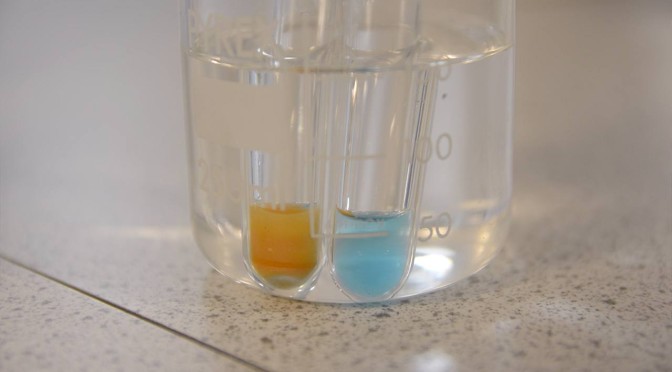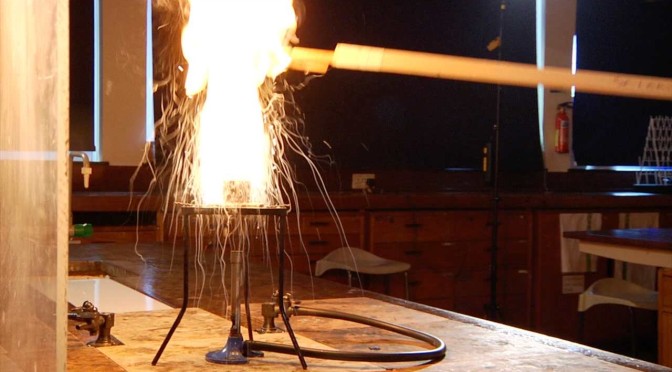I suspect many of you who watch the above video will know exactly how it’s done but it’s not immediately apparent to everyone, especially if you choose to present it in a way that isn’t quite honest about what’s going on.
I use this demo in my teaching to introduce the idea that an object will topple over if the line of action of its weight lies outside its base. I usually present it as a challenge: I start off with two identical (apparently) empty drink cans on my desk (yes, I know the ones in the video have slightly different designs). I offer one of the cans to a student and challenge him or her to balance it on the edge of the base. I tell them I’ll try to do the same with the other can. I make a big show of concentrating, then reveal that I have managed to make my can balance while the student’s can keeps falling over (this usually gets a gasp of approval – as I think the video shows, the can balanced on its edge looks quite disconcerting). After the initial surprise at my being able to balance the can, the students usually guess that something’s not quite right.
I think this demo works well presented as a “magic trick” because it captures students’ attention and provokes the question “what’s going on?” or “how does that work?” and that’s when the discussion begins…
UPDATE: I’ve had a couple of responses to this post on Twitter and elsewhere. I should perhaps have said that using this type of approach may not be suitable for all teachers – you have to be comfortable with the way you present a demo to a class and if showmanship isn’t your thing there’s no point forcing it (although I’d argue that this particular demo requires very little in the way of showmanship to present as a “magic” trick). We touch on this issue in our forthcoming film Demo: The Movie.
A teacher contacted me saying it was a shame I didn’t provide an explanation as it would make it easier for teachers to do the demo if they knew exactly how to do it. So, here’s the trick: place a little water in the can you want to balance before your lesson. The easiest way to judge the correct amount of water is to hold the can in the balanced position then pour water into the can until you feel it just balances. Alternatively, you could pour in liquid wax and let that set so that you have a pre-prepared can that you can keep in the equipment cupboard.






